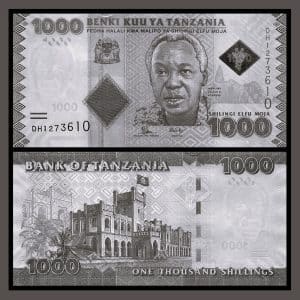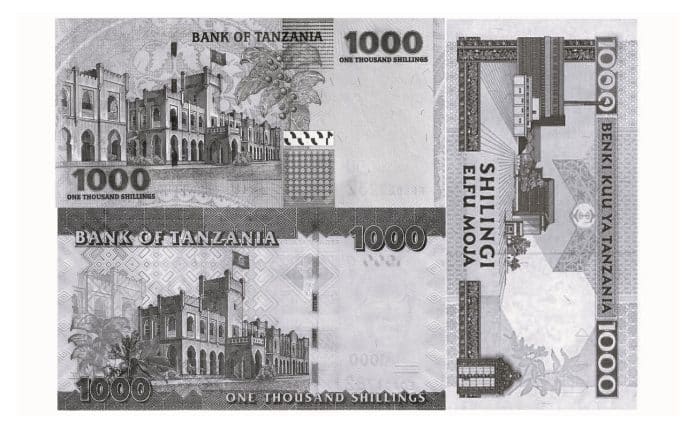Exploring Tanzania: Unveiling the Rich History Behind the One Thousand Shillings Banknote
Step into the vibrant world of Tanzania as we delve into the story behind the iconic One Thousand Shillings Tanzania banknote. This currency, adorned with images that reflect the country’s diverse heritage and rich history, provides a glimpse into the soul of Tanzania itself. From the bustling city streets of Dar es Salaam to the majestic plains of the Serengeti, Tanzania is a land immersed in captivating legends and awe-inspiring traditions.
The One Thousand Shillings Tanzania banknote acts as a portal to explore these stories, taking us on a journey through time. With its depiction of renowned landmarks, traditional artifacts, and prominent figures, the banknote reveals fascinating tales of a nation shaped by resilience, diversity, and cultural heritage. From the ancient trade routes of Zanzibar to the Maasai warriors standing strong against the test of time, each image on the banknote has a remarkable tale to tell. Join us as we unravel the hidden narratives behind the captivating images on the One Thousand Shillings banknote and discover the true essence of Tanzania’s vibrant past.
Historical significance of the banknote
The One Thousand Shillings Tanzania banknote holds immense historical significance for Tanzania. It was first introduced in 1985 and has since become a symbol of the nation’s progress and cultural heritage. The banknote showcases Tanzania’s commitment to celebrating its history and promoting national identity. In a country where oral traditions have played a crucial role in passing down stories from generation to generation, the banknote acts as a tangible representation of these narratives. Each time someone holds the One Thousand Shillings banknote, they are reminded of the rich history and cultural diversity that defines Tanzania.
Design elements on the banknote

The One Thousand Shillings banknote is intricately designed, with various elements that reflect Tanzania’s past and present. The front side of the banknote features a portrait of the country’s first President, Julius Nyerere. Nyerere was a key figure in Tanzania’s struggle for independence and his inclusion on the banknote pays homage to his significant contributions to the nation. The back side of the banknote is adorned with images that represent Tanzania’s natural beauty, cultural heritage, and historical landmarks.
The portrait on the banknote
The portrait of Julius Nyerere on the One Thousand Shillings Tanzania serves as a reminder of the nation’s fight for independence. Nyerere was a visionary leader who played a crucial role in uniting Tanzania and shaping its future. His portrait captures his determination and commitment to the welfare of the Tanzanian people. Nyerere’s presence on the banknote is a testament to his enduring legacy and the impact he had on the nation.
Symbols and landmarks featured on the banknote

The One Thousand Shillings banknote showcases several symbols and landmarks that are deeply ingrained in Tanzanian culture and history. One prominent image is that of Mount Kilimanjaro, Africa’s highest peak and a symbol of Tanzania’s natural beauty. The inclusion of this majestic mountain on the banknote reflects the nation’s pride in its remarkable landscapes. Another significant symbol is the traditional wooden carving of a Makonde mask. This mask represents the country’s vibrant arts and craft traditions and serves as a reminder of Tanzania’s cultural diversity.
The cultural heritage represented on the banknote
The One Thousand Shillings Tanzania banknote beautifully depicts Tanzania’s cultural heritage through its choice of images. One such image is that of a Maasai warrior, adorned in traditional attire and holding a spear. The Maasai people are known for their rich cultural traditions, including their distinctive clothing, jewelry, and warrior traditions. The inclusion of the Maasai warrior on the banknote celebrates their resilience and enduring presence in Tanzanian society. Additionally, the banknote features a depiction of traditional dhows sailing on the Indian Ocean. These sailboats have been an integral part of Tanzania’s coastal history, serving as vessels for trade and transportation.
Exploring the history of Tanzania
To truly understand the significance of the One Thousand Shillings banknote, we must explore the history of Tanzania itself. Tanzania, located in East Africa, has a rich and complex history that spans thousands of years. The region has been inhabited by various indigenous tribes, each with their own unique customs and traditions. Over the centuries, Tanzania has been influenced by Arab traders, Portuguese explorers, and European colonial powers. These interactions have shaped the nation’s cultural, linguistic, and economic landscape. From the ancient trade routes of Zanzibar to the colonial era of German and British rule, Tanzania’s history is a tapestry of diverse influences.
Stories and legends associated with the banknote
Each image on the One Thousand Shillings Tanzania banknote has a story to tell. For example, the Makonde mask represents the Makonde people, who are renowned for their intricate wood carvings. These carvings often depict mythical creatures and tell stories of creation and ancestral spirits. The inclusion of the mask on the banknote invites us to explore the rich mythology and folklore of Tanzania. Similarly, the image of the Maasai warrior evokes tales of bravery, resilience, and cultural pride. The Maasai people have a long history of defending their land and traditions, and their presence on the banknote serves as a reminder of their enduring spirit.
Collecting the One Thousand Shillings Banknote
For collectors and history enthusiasts, the One Thousand Shillings banknote holds a special allure. Its unique design elements and historical significance make it a sought-after item for those interested in Tanzanian history and culture. Collecting banknotes allows individuals to preserve a tangible piece of history and serves as a reminder of the stories and legends associated with the currency. Whether it is for educational purposes or personal interest, collecting the One Thousand Shillings banknote is a way to celebrate and honor Tanzania’s vibrant past.
Preserving and celebrating Tanzanian history
The One Thousand Shillings Tanzania banknote is more than just a piece of currency; it is a gateway to Tanzania’s rich history and cultural heritage. Through its design elements and depiction of prominent figures, symbols, and landmarks, the banknote tells the stories of a nation shaped by resilience, diversity, and cultural pride. Exploring the hidden narratives behind the images on the banknote allows us to delve into Tanzania’s past and gain a deeper appreciation for its vibrant history. By preserving and celebrating Tanzanian history, we ensure that future generations can continue to be inspired by the remarkable tales unveiled by the One Thousand Shillings banknote.
For more articles related to Financial Services in Tanzania, click here!































